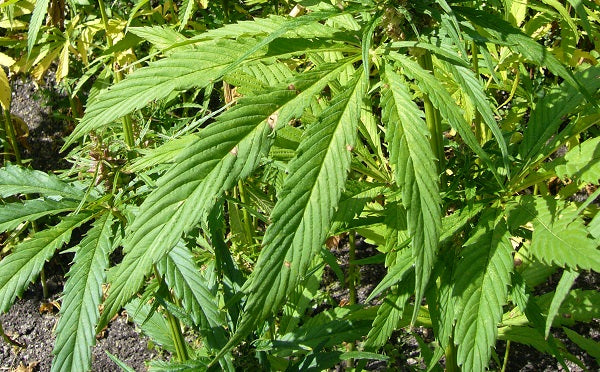I’ve been researching and writing about cannabinoids and the endocannabinoid system for so long, that it’s often easy for me to forget that it's still a relatively new discovery. Unlike the immune system, the topic of many dinner table conversations, few people ever have heard of the endocannabinoid system, let alone understand its function.
I also tend to forget that the research on the endocannabinoid system (ECS) is ever evolving, with a constant stream of new information published by leading scientists in the field. What we knew about the endocannabinoid system even a decade ago seems like child's play today.
The ECS is not common knowledge, but it is still a remarkably vital aspect of human physiology. After all, it's not taught in schools alongside diagrams of the central nervous system and the digestive tract, but it plays a pivotal role in both. It’s important to learn the details of this mysterious, yet crucial, communication network. Especially at a time when cannabinoid research is revolutionizing medicine.
Endocannabinoid System Explained

The best way to understand the basic premise of the ECS is by envisioning a network of chemical communication transmissions: a system of messengers and specially built receivers. The ECS produces neurotransmitters in response to internal or external stressors. These tiny messengers travel through the body, going where needed.
For example, our bodies produce anandamide as a way to combat anxiety and depression. They also produce a compound called oxytocin, released during childbirth, orgasm, and sexual activity. Oxytocin triggers feelings of empathy, closeness, and generosity. Your body produces many more endocannabinoids as well.
The ECS’s primary goal is maintaining a constant and stable internal environment, homeostasis. If the body is subjected to an invading pathogen, a period of depression, or tissue damage, the ECS kicks into overdrive in an effort to correct the problem. Unfortunately, some issues are just too much for the ECS to handle, or sometimes the ECS never turns off. In these cases, there are subsequent problems with an overactive or underactive ECS.
When functioning properly the ECS is responsible for a laundry list of basic bodily functions:
- Pain sensation
- Memory
- Metabolism
- Sleep
- Mood
- Temperature
- Inflammatory response
- Proper digestion
- Immune function
- … and many more
The naturally produced neurotransmitters are called endocannabinoids, but there are also plant-based cannabinoids called phytocannabinoids, which integrate perfectly into the ECS. For example, after consuming cannabis, the phytocannabinoids quickly go to work throughout the ECS, interacting with two of the primary receptors: CB1 and CB2.
Cannabis has the highest concentrations of cannabinoids of any known plant, but there are a few other plants that activate the endocannabinoid system as well.
These receptors found throughout our bodies are highly concentrated in a few specific areas. We have high concentrations of the CB1 receptor in our brains, organs, glands, and central nervous system, while the CB2 receptor tends to be found in the immune system and the peripheral nervous system.
The Endocannabinoid System and CBD
The cannabis plant is thought to have upwards of 60 cannabinoids, perhaps more. Each plays a different role in the ECS, stimulating or inhibiting the activation of various receptors. The easiest way to understand the function of CBD in the ECS is to compare it to another well-known cannabinoid, Tetrahydrocannabinol (THC).
The only known psychoactive cannabinoid, THC fits like a hand into a glove, straight into the CB1 receptors in the brain. The ECS itself actually was discovered thanks in part to research exploring how THC affects the brain. As cannabinoid connections go, the THC connection is incredibly durable and is one reason why THC triggers a noticeable high when ingested.
Cannabidiol (CBD), on the other hand, has no such connection. Instead, it indirectly interacts with both receptors. The bulk of CBD research thus far seems to indicate that CBD plays more of an inhibitory role within the ECS than a stimulatory one. As a primary example, it inhibits the production of a fatty enzyme called FAAH. This little-known substance is responsible for breaking down anandamide, the bliss molecule.
Cannabidiol also has a powerful effect on the strong connection between the THC molecule and the CB1 receptor. When CBD and THC are consumed together, CBD actually reduces the sensation of the high. It essentially limits the duration of a typical connection.
Applications for CBD in Endocannabinoid System Deficiency
The concept of ECS deficiency is a new one, but some research is exploring it as a way of understanding the list of seemingly unconnected health issues that have benefitted from cannabinoids, such as CBD. Although most of us by now have heard that CBD can reduce the frequency and severity of drug-resistant seizures in children, there is an ever-growing list of other health issues where CBD is demonstrating significant potential, including:
- Glaucoma
- Chronic Pain
- Autoimmune Diseases
- Arthritis
- Inflammation
- Neurodegenerative Diseases (Parkinson’s, Alzheimer's)
- Addictions
- Migraines
- Fibromyalgia
- Irritable bowel syndrome
- Depression and Anxiety
RELATED: This Is How CBD Can Boost Your Eye Health
What some researchers are proposing is that these seemingly unrelated health issues actually are similar in one fundamental way, they all are triggered by an endocannabinoid deficiency. While this new understanding of the ECS and disease is still in its infancy, it seems increasingly plausible. Cannabinoids -- such as CBD, THC and more -- have shown through scientific study to be of therapeutic benefit for these health issues.

Even for someone like me, who writes about cannabinoids and the ECS on an ongoing basis, I’m constantly surprised by new research. As our understanding of the ECS expands, it is drastically changing the way we’ve approached treatment of illness and disease. The potential therapeutic applications of CBD especially are nothing short of revolutionary. It is safe to use, has few side effects, and doesn't trigger the psychoactivity associated with THC. The future of CBD as alternative medicine is going to be extremely exciting.
---------------
Sources:
https://www.leafly.com/news/science-tech/the-endocannabinoid-system-and-cbds-role-in-stress-anxiety-and-fe
https://www.cannabis.info/en/blog/what-is-anandamide-how-does-it-help-marijuana-users
https://www.ncbi.nlm.nih.gov/pmc/articles/PMC3997295/
https://www.ncbi.nlm.nih.gov/pubmed/18404144
http://norml.org/library/item/introduction-to-the-endocannabinoid-system





























